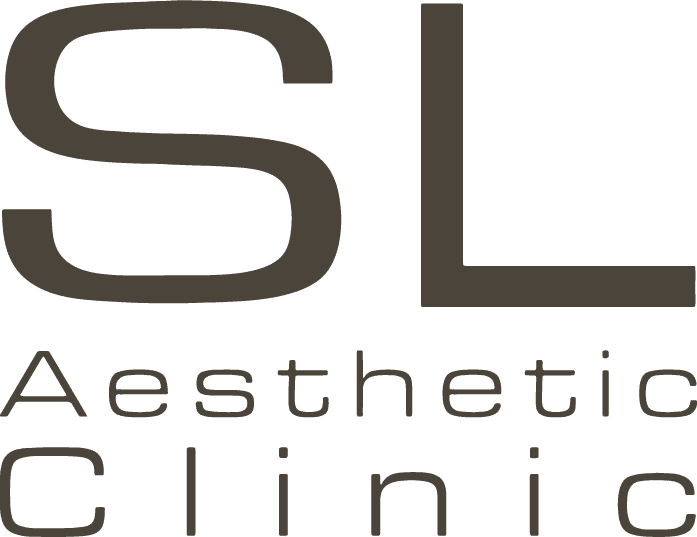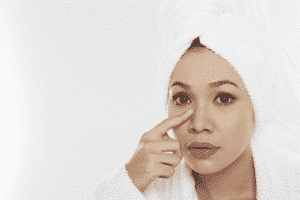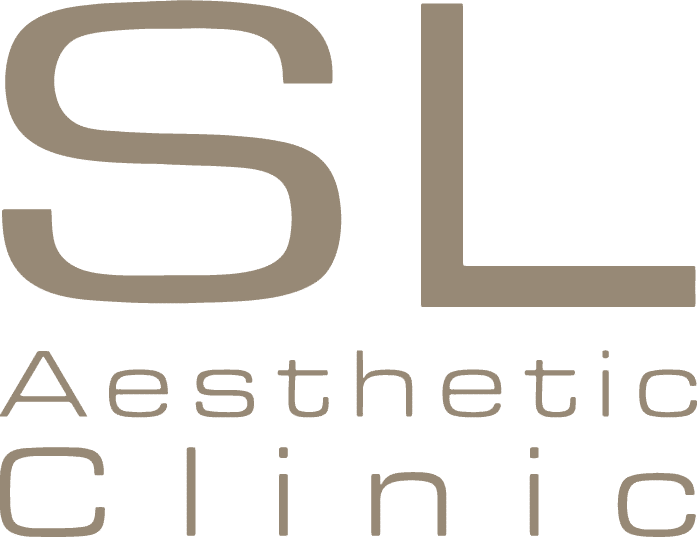All You Need To Know About Nose Threadlift

What Is Nose Thread Lift?
Nose thread lift is a non-surgical, minimally-invasive nose enhancement treatment that started in Korea and gained traction in Singapore as a safe alternative to other nose augmentation treatments such as [nose fillers] and nose implant rhinoplasty surgery.
Nose thread lift involves using biodegradable surgical threads that are specifically enhanced to naturally improve the height and profile of the nose bridge as well as to sharpen the nose tip.
The threads used in nose thread lifts are similar to those used in surgery, and are safely synthesised using bioabsorbable materials such as polydioxanone (PDO), which is commonly used in Singapore. The threads are slowly and safely absorbed by the body over a 6 to 9- month period, but results last beyond that due to the collagen regeneration process.
Nose Thread Lift Enhances Your Nose In The Following Ways:
- Levels out small gaps or kinks in the nose bridge.
- Creates a higher looking nose bridge.
- Straightens the nose bridge for a straighter nose profile.
- Lifts, projects and sharpens the nose tip.
- Reduces nostril flaring.
- Improves overall nose definition for a more aesthetically pleasing set of facial features.
What Are The Pros Of Nose Thread Lift?
- Immediate effect and improvements to the nose.
- Results are long-lasting of up to a year.
- Safe, effective and a budget friendly alternative to nose filler and rhinoplasty.
What Are The Cons Of Nose Thread Lift?
- Cannot be dissolved, unlike fillers.
- Unable to correct humps/bumps on the nose bridge.
How Is Nose Thread Lift Performed?
- The entire treatment takes about 15 to30 minutes to complete. After you’ve been assessed as a suitable candidate for nose thread lift, local anaesthetic (painkillers) is injected at the point where the nose tip and nose bridge meet. This point will also serve as the only injection site for the entire procedure.
- Next, local anaesthetic is then introduced over the entire length of the nose bridge and nose tip. This is done so with a blunt and flexible cannula needle. This step numbs and prepares the area for nose thread insertion.
- The PDO nose threads are mounted on a blunt cannula and carefully inserted into your nose bridge and nose tip. As your nose is suitably anaesthetised, your comfort is maximised throughout this process.
How Does Nose Thread Lift Work?
Once inserted into your nose, the PDO nose threads help lift, sculpt and contour your nose in 2 ways:
- Mechanically: The threads act like scaffolding to the structure of your nose, giving it immediate mechanical support and enhancing your nose’s shape and definition.
- Biochemically: PDO (polydioxanone), the key component of nose threads, is fully biocompatible and has been proven to stimulate collagen production. Plus, the nose threads themselves are covered in cog-like formations or barbs that also increase collagen and tissue fibroblasts in the surrounding tissue
Over the course of 6 to 9 months, the nose threads safely and gradually dissolve and are absorbed by the body. This process stimulates collagen production and tissue fibroblasts in your nose, which continue to elevate your nose bridge and nose tip for results that can last up to 1 year, sometimes 2 years.
What is ArtLift?
There are many brands of nose thread lifts in Singapore. At SL Aesthetic Clinic, we use ArtLift, a threadlift brand that’s registered on the Singapore Medical Device Register (SMDR).
Always be sure that the brand of nose threads you are getting is registered on the SMDR.
The Importance Of Picking The Right Nose Thread
Using the right type of thread for your nose thread lift ensures safe, lasting results. Polydioxanone (PDO) threads are most commonly used for nose thread lift in Singapore as PDO has been around the longest, with a proven track record.
Other relatively newer thread materials include polylactic acid (PLA), and polycaprolactone (PCA), which may be incorporated in nose threads in the future.
There are three main types of PDO threads, but not all are suitable for nose thread lift:
- Monofilament (mono) threads. These are smooth and thin, and are usually placed superficially under the skin to provide a skin firming effect with a small amount of lift. They may be used in conjunction with other threads for additional support but are not the most ideal for nose thread lift.
- Screw threads. These come in one or two intertwined threads around the needle and are used to provide volume restoration to larger sunken areas of the skin.
- Cog/barbed threads. These have tiny bards on their surface that hook onto the surrounding tissue to provide support, plus tissue lifting and stimulation, which make them ideal for nose thread lift.
ArtLift nose threads are PDO threads with cogs all-around on its surface for maximum support and tissue stimulation. This is another reason why we at SL Aesthetic Clinic prefer using ArtLift nose threads in Singapore.
How Many Threads Do I Need For Nose Thread Lift?
As an estimate, we use about 6 to 10 PDO cog threads to lift the nose bridge, and about 4 to 8 PDO cog threads for the nose tip. The rule of thumb is, the more lifting is required in the nose, the more threads are needed.
Plus, the exact number of threads for nose thread lift ultimately depends on the individual and the type of threads used.
For example, a seemingly high number of threads may in reality contain more monofilament threads (thinner and less effective for nose thread lifting), and a lower number of cog threads (more effective for nose thread lifting).
It is important that patients understand this difference and find out what type and number for each type of threads used in a nose thread lift.
How Long Does Nose Thread Lift Last?
Results of nose thread lift can last an average of 1 year, and sometimes up to 2 years. Our HIKO Nose Thread Lift alternative can be repeated once every 1 to 2 years, or as soon as the threads have completely been absorbed by your body.
The longevity of the results are affected by many factors such as diet, exercise, lifestyle habits (e.g., consumption of alcohol or cigarette smoking), and genetics.
What Is The Cost/Price Of Nose Thread Lift?
Prices will vary depending on the number of threads required as well as the nature of complexity presented by individual patients. We recommend for you to schedule a consultation with our doctor to get a more accurate price estimate.
FAQ
Yes. The procedure is safe when performed by a doctor familiar with nose thread lift.
Polydioxanone (PDO) absorbable threads have been used in surgery for many years with a good safety record. Nose thread lift has been practiced since 2003.
Most nose thread lift complications, if any, arise due to improper patient selection (such as performing nose thread lift for patients who have had rhinoplasty implants), or poor technique in placing the threads in the nose.
Our doctors are trained in nose thread lift and have been perfecting our craft since its introduction to Singapore from Korea.
Nose thread lift is not painful and is well tolerated by most patients. This is because of the local anaesthesia introduced before treatment. For your extra comfort, painkiller medication can be prescribed by the doctor if required.
After your nose thread lift treatment, your nose may be tender and sore to the touch, but this will dissipate in the next few days or so.
Downtime is minimal and you are free to return to most daily activities with some exceptions.
Side effects are temporary and are usually associated with anaesthetic injection such as swelling, which will subside a few hours post-treatment. Bruising and post-procedure swelling, if any, will resolve in a few days.
Learn more about nose thread lift after-treatment care below.
Complications, while rare, have been reported in medical literature or are theoretical in nature such as:
- Infection – very low risk with a hygienic treatment protocol. Further minimised with prescribed post-treatment antibiotics.
- Deviated nose bridge – this happens when threads are not inserted properly. This disappears once the threads have dissolved. Threads may also be removed depending on individual circumstances.
- Allergic reaction – very rare as PDO is safe and biocompatible.
Pre-treatment instructions:
- Always inform your doctor of all medications, including supplements you may be taking, as well as your medical history.
- You should also plan ahead. If you have a special event coming, give yourself a 2-week lead time for your treatment appointment.
Post-treatment instructions:
- Makeup may be applied a few hours after treatment if no complications are present such as open wounds, bleeding or infection.
- You will be given an antibiotic cream/medication after the procedure. Use as directed.
- Avoid excessive touching or massaging your nose. Be gentle with your nose as you continue with your usual skincare routine.
- Limit alcohol intake and avoid any fish oil supplements until the swelling has fully subsided.
- Limit sun exposure in the first week to avoid hyperpigmentation as the wound at the injection site heals. Always use sunscreen during day time.
- Avoid strenuous exercise for the first 24 hours, or longer if there is discomfort over the nose area.
Yes! Research has shown that Nose Thread Lift can be combined with Nose Fillers for a cohesively effective result.
Nose Thread Lift is suitable for any healthy adult looking to heighten and add definition to their nose bridge or sharpen their nose tip.
Nose Thread Lift is suitable for you even if you have had nose fillers done previously.
Nose Thread Lift my be unsuitable for the following circumstances:
- Unrealistic expectations.
- Previous rhinoplasty surgery.
- Pregnant or nursing.
- On blood thinning medication.
- Blood clotting or bleeding disorders.
- Autoimmune diseases.
Like what you read? Share them!



